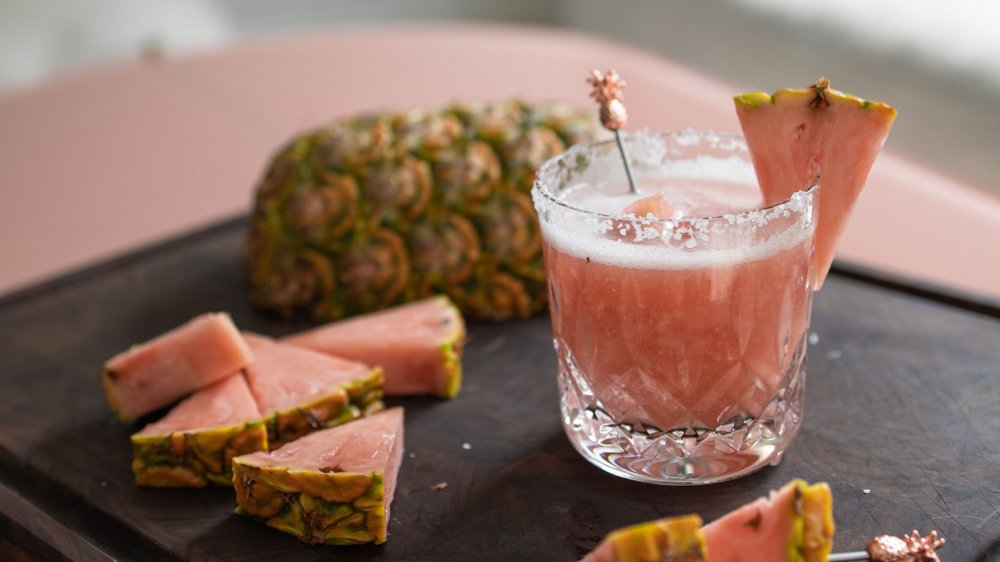The Real Reason These Pink Pineapples Cost $49
Joining 2020's growing list of fruits that are seemingly made to be shared via social media, pineapple giant Del Monte recently rolled out a pink fleshed variety that's ready for its close up (via Food and Wine). Head over to the fruit's landing page and you'll find a glamor shot of a glowing pink cross-section and text describing the product as the "Jewel of the Jungle," asking you to "Experience a taste of a remote paradise where compasses spin wildly, life is over-the-top, and pineapples are pink."
Del Monte is leaning hard into the fruit's Instagramability. "Become the envy of your friends and followers with this highly sought-after delicacy. Pinkglow will look phenomenal on whatever social media platform is en vogue by the time you read this," reads additional copy on the site. Scroll down further, and you'll find recipes for dishes like pineapple raspberry wine spritzers and meringue trifles with lime curd that are immaculately styled and photographed to accentuate the warm, welcoming pink of the fruit that was developed by the company. So, how does one go about getting their hands on a Pinkglow pineapple? Well, first thing you'll have to do is consult your fruit budget. If you have an extra $49 in disposable fruit cash, head on over to one of Del Monte's two online partners, Melissa's or Tropical Fruit Box.
How does one justify spending almost fifty bucks on a single pineapple?
But the real question here is just how does one justify spending almost fifty bucks on a single fruit. Tropical Fruit Box is more than happy to provide a bit of insight into the benefits of purchasing one of their priciest items. Tropical Fruit Box's Pinkglow product page says that these one of a kind pineapples are grown in a region of Costa Rica that boasts rich volcanic soil and an ideal climate for growing perfect pineapples. Unlike other fruits, pineapples can take anywhere from 20 months to two years to fully mature. Those concerned with the sustainability of their pricey fruit purchase will be pleased to know that the farm at which the Pinkglows are grown is fully carbon-neutral.
Food and Wine says that the world's first (we're assuming) pink pineapple has been in the works for more than 15 years, and the Pinkglow website's FAQ page states the fruit's rosy tone comes from lycopene, a naturally occurring antioxidant responsible for the color in watermelon and pink grapefruit (via Healthline). The Pinkglow pineapple ships packed in a chic box, but one thing that's missing from the fruit is its spiky crown. This decision had nothing to do with aesthetics, as the Pinkglow website explains that the pineapples have their crowns removed and replanted to grow more Pinkglows.

